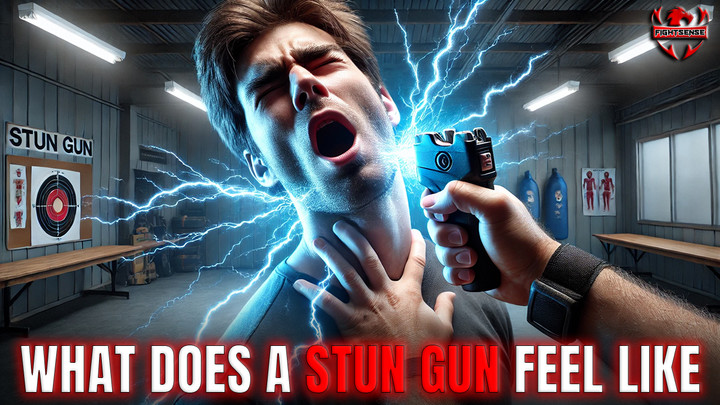What Does a Stun Gun Feel Like? Understanding the Impact
24th Feb 2025
What does a stun gun feel like? It feels like a jolt of intense pain mixed with a sudden loss of control. The shock doesn’t just sting; it disrupts the body’s electrical signals, causing powerful muscle contractions, confusion, and temporary paralysis.
The sensation can vary depending on the voltage, duration of the shock, and an individual’s pain tolerance. However, it’s generally described as overwhelming and incapacitating—unlike any ordinary pain, leaving the person disoriented and unable to move for a short time.
Key Highlights:
-
Feels like a strong electric shock with pain and muscle spasms.
-
Effects last a few seconds and cause no lasting damage.
-
More intense than a static shock, less severe than a Taser.
-
Impact depends on voltage, duration, and body sensitivity.
-
Safe for self-defense when used responsibly.
What Are the Effects of a Stun Gun Shock?
A stun gun shock feels like a sudden, forceful jolt of electricity surging through the body. Depending on the power level, you might experience:
-
Sharp, intense pain: The electric current creates an immediate and overwhelming shock.
-
Involuntary muscle contractions: The body stiffens as the muscles are forcibly activated.
-
Burning or tingling sensation: A lingering, numbing effect may persist after the shock.
-
Disorientation and loss of coordination: Higher-voltage stun guns can cause temporary confusion.
How Does Stun Gun Pain Compare to Other Pain?
To put the sensation into perspective, the pain of a stun gun can be compared to other common experiences. It's stronger than a static shock, which is just a mild zap you get from rubbing your feet on a carpet. A stun gun delivers a much more intense jolt.
It feels similar to intense muscle cramps, where muscles contract painfully. However, it's less painful than a Taser, which causes deeper pain and full-body paralysis. Finally, it's more intense than a slap or punch, because the shock doesn't just hit the surface—it directly impacts the nervous system.
How Long Does the Pain from a Stun Gun Last?
The duration of stun gun pain varies based on the length of the shock.
-
1 second: A sharp sting with slight muscle tightening.
-
2–3 seconds: Noticeable disorientation, muscle spasms, and temporary weakness.
-
5+ seconds: Overwhelming discomfort, loss of balance, and confusion.
From a medical standpoint, stun guns work by disrupting neuromuscular communication, causing muscles to contract uncontrollably. Although the pain can be intense, the effects are typically short-lived. Most users experience only mild redness, localized soreness, or temporary fatigue, with no long-term tissue or nerve damage in healthy individuals.
How Different Factors Influence Stun Gun Pain:
The pain from a stun gun is influenced by several factors. First, voltage and amperage are key—higher-powered stun guns tend to produce stronger and more intense pain. The duration of contact also matters: a brief zap feels different than longer exposure, which leads to more intense discomfort.
The targeted body area plays a significant role; areas with thinner skin or more nerve endings, like the neck or hands, will feel the shock much more sharply. Finally, pain tolerance varies from person to person, so some people may experience more severe effects than others.
Is It Safe to Use a Stun Gun?
Yes, stun guns are generally safe when used correctly. They are designed to be non-lethal and cause temporary pain and incapacitation without lasting harm. The effects typically wear off within seconds, with no long-term tissue or nerve damage in healthy individuals.
However, improper use or prolonged exposure can lead to burn marks, muscle soreness, or temporary nerve irritation. It's important to remember that while they’re effective for self-defense, stun guns should be used with caution. Overuse or targeting sensitive areas, like the head or neck, can increase the risk of injury.
Shop Now !
FAQs:
1. Does a stun gun hurt more than a Taser?
No, a Taser is more painful because it affects the whole body, while a stun gun targets localized muscles.
2. Can a stun gun knock someone unconscious?
No, it temporarily disables movement and coordination but doesn’t cause unconsciousness.
3. How long does the pain from a stun gun last?
Pain usually lasts a few seconds to minutes, with mild soreness afterward.
4. Can you build tolerance to a stun gun?
No, repeated exposure doesn’t make you immune to its effects.
5. Is it legal to carry a stun gun?
Laws vary, so check local regulations before purchasing or carrying one.
Final Thoughts:
A stun gun delivers a strong electric shock that causes sharp pain, muscle spasms, and brief disorientation, but the effects fade quickly with no lasting harm. Less intense than a Taser but stronger than a static shock, it’s designed to incapacitate, not injure. With proper use and legal adherence, stun guns are a safe and effective self-defense tool.
Disclaimer:
Stun guns are intended for self-defense and should be used responsibly. Always follow local laws and safety guidelines when carrying or using a stun gun.

